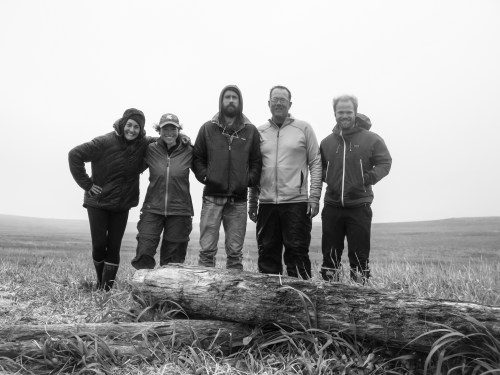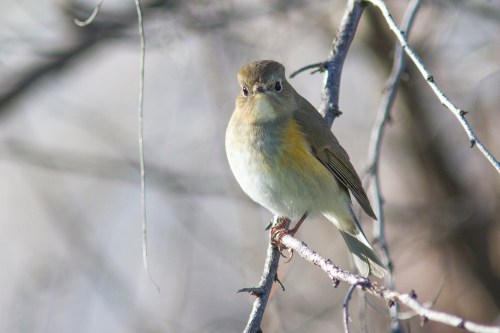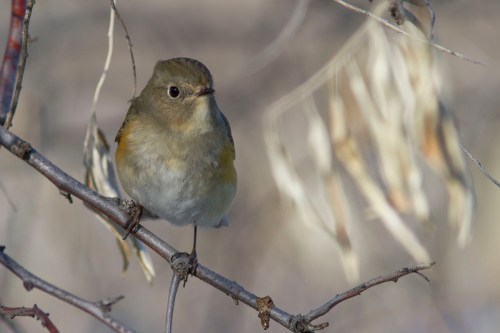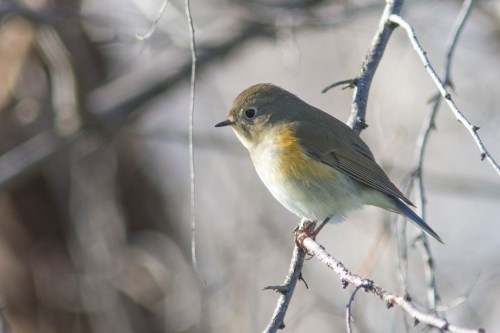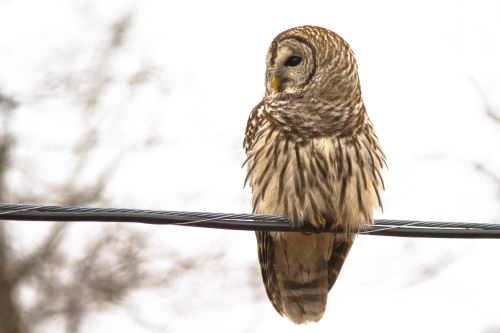Plectrophenax Illustration Featured in the Cornell Lab of Ornithology’s Living Bird Magazine: Complementary to an Article on the Birds of St. Matthew Island by Irby Lovette
by Bryce W. Robinson
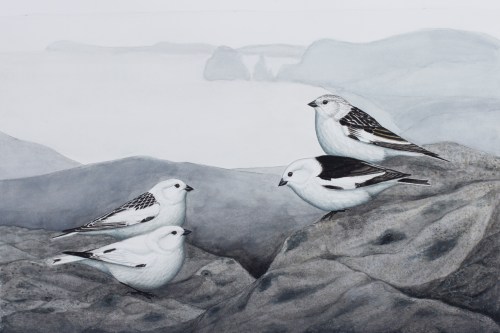
Plectrophenax spp., an illustration to complement the article detailing the 2018 Expedition to St. Matthew Island in Living Bird by Irby Lovette. Mckay’s Bunting (Plectrophenax hyperboreus; left), and Snow Bunting (Plectrophenax nivalis; right).
My involvement in the 2018 USFWS and USGS expedition to St. Matthew Island in the Bering Sea was as a field ornithologist, tasked with conducting surveys and collecting data on the abundance and nesting ecology of Mckay’s Bunting (Plectrophenax hyperboreus) and the Pribilof Rock Sandpiper (Calidris ptilocnemis ptilocnemis). Of my four companions during my time on the island, two were from the Cornell Lab of Ornithology; Irby Lovette and Andy Johnson. Irby came along to assist Andy in filming and recording the birdlife on the island. He was also focused on experiencing the island to eventually write an article in Living Bird magazine. This article is now available online. It is a well written treatment of our experience, and details some of the fascinating history of the island as well. Also newly released to complement the article is a video, produced by Andy Johnson, that details some of the birdlife that we encountered on the island. It also highlights the purpose of our visit, and describes very well the feeling of being on this remote Bering Sea island.
I show up a few times in this video, in two occasions of which I am field sketching and painting. When in the field, I generally spend weather days or down-time sketching. I took the opportunity on a number of occasions and greatly enjoyed painting while in such an inspiring place. Irby took notice of my skills as an illustrator, and asked about my interest to paint an illustration to complement the article for Living Bird.
My drive to integrate illustration into my time on one of the most remote locations in North America enriched my experience. It is my hope that the illustrations I worked out on the island become part of a collection of products that complement the research we conducted. I hope these products provide a point of reference, and serve as a description for our experience. I envision an eager naturalist preparing for a trip to St. Matthew Island, as removed in time as we are to Fuertes and the short visit of the Harriman Expedition, exploring the various productions that have arisen and are yet to arise from our relatively short stay on the island. It is my hope that these products stir excitement and attention for this lonely location, support its preservation, and encourage further research into the life histories of its inhabitants.
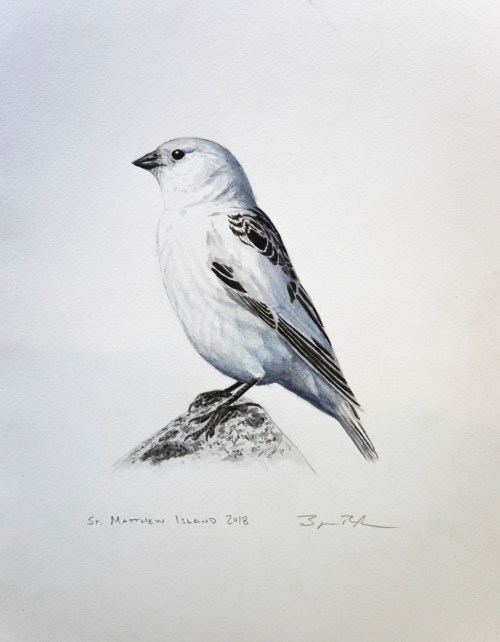
Female Mckay’s Bunting. This is the painting I am working on in the video. It is now under the care of Andy Johnson in Ithaca, New York.
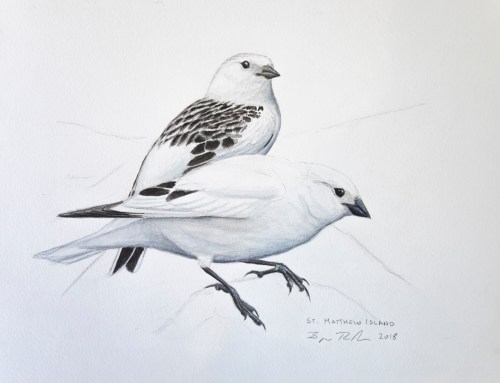
A male and female Mckay’s Bunting painted on St. Matthew Island in 2018. This painting is now under the care of Irby Lovette at the Cornell Lab of Ornithology in Ithaca, New York.
Our month-long stay on the island was packed with incredible experiences and important discoveries. Such experiences are mentioned in Irby’s article, yet they truly only skim the surface. Over the next year or two, more products will come forward from our short stay on the island, so please stay tuned.
The Living Bird article on the birds of St. Matthew Island written by Irby Lovette can be found at the link below:
https://www.allaboutbirds.org/birds-of-st-matthew-island-the-most-remote-place-in-the-united-states/

